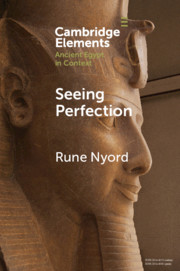Element contents
Seeing Perfection
Published online by Cambridge University Press: 19 October 2020
Summary
- Type
- Element
- Information
- Online ISBN: 9781108881494Publisher: Cambridge University PressPrint publication: 19 November 2020
References
- 23
- Cited by

